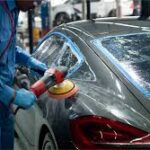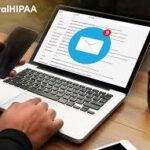Roof maintenance is more than just an occasional repair—it is an ongoing process that protects one of your most valuable assets: your roof. In this guide, we provide an in-depth, easy-to-understand exploration of fladderak roof management. Our aim is to deliver a comprehensive resource that covers every aspect of roof care, ensuring your property remains safe, energy-efficient, and cost-effective in the long run.
1. Introduction
Every property owner understands the importance of a secure, well-maintained roof. Yet, many fall into the trap of reactive repairs rather than adopting a proactive approach. Fladderak roof management is a structured system designed to monitor, maintain, and enhance the performance of your roofing system. This guide will explain the fundamental principles, benefits, and advanced practices of this approach, ensuring you stay ahead of common issues and potential failures.
1.1 Purpose and Benefits
The purpose of this guide is to empower homeowners, property managers, and commercial operators with the knowledge needed to implement a proactive roof management strategy. By embracing fladderak roof management, you not only protect your property from structural damage and leaks but also increase energy efficiency, reduce long-term costs, and boost the overall value of your investment.
1.2 What is Fladderak Roof Management?
At its core, fladderak roof management is a proactive method for maintaining roofs. Unlike traditional reactive repair methods, this system involves regular inspections, preventive maintenance, timely repairs, and the use of modern technology to track the health of your roof. By understanding the evolution and unique features of this system, you can appreciate why it offers significant advantages over conventional methods.
2. Understanding Fladderak Roof Management
2.1 The Concept and Evolution
Fladderak roof management has evolved from basic repair strategies into a sophisticated, systematic approach that incorporates industry best practices. Originally developed to address recurring roofing problems, this method has grown to include comprehensive data tracking, advanced diagnostics, and preventive strategies that keep roofs in optimal condition. Over time, it has incorporated standards from professional organizations and emerging technologies, making it a robust solution for modern roofing challenges.
2.2 Unique Features and Terminology
The term “fladderak” may have originated as a proprietary concept, symbolizing a dynamic and fluid approach to roof management. Unlike traditional methods that focus solely on fixing visible damage, fladderak roof management emphasizes early detection and preventive care. Key terms include “proactive inspections,” “preventive maintenance,” and “data-driven decision-making,” all of which differentiate this approach from reactive repair techniques.
3. Why Effective Roof Management is Critical
A well-maintained roof is essential for several reasons. Not only does it safeguard your property, but it also contributes to long-term financial savings and environmental sustainability.
3.1 Enhancing Safety and Structural Integrity
A deteriorating roof can lead to leaks, mold growth, and even structural collapse, putting both occupants and property at risk. With regular upkeep under fladderak roof management, potential hazards are identified and resolved before they escalate into serious safety issues.
3.2 Financial Benefits and Return on Investment
Maintaining your roof with a proactive approach can significantly reduce long-term repair costs. By investing in regular inspections and preventive maintenance, you minimize the need for expensive emergency repairs or full roof replacements. In the long run, this strategy not only saves money but also enhances property value and energy efficiency.
3.3 Environmental and Sustainability Benefits
A robust roof management system supports sustainability. Extending the lifespan of your roof reduces waste, and when combined with eco-friendly materials and techniques, it helps lower your overall energy consumption. Fladderak roof management thus contributes to a greener, more sustainable future.
4. Core Components of Fladderak Roof Management
Effective fladderak roof management consists of several interrelated components that work together to maintain the roof’s health.
4.1 Regular Roof Inspections
Regular inspections are the cornerstone of this approach. Professional roof assessors evaluate all components—from shingles and flashing to gutters and insulation—at least twice a year. This process helps to detect minor issues like loose shingles or small leaks before they become major problems.
4.2 Preventive Maintenance Strategies
Preventive maintenance involves routine actions such as cleaning gutters, removing debris, and applying protective coatings. These activities not only preserve the roof’s condition but also improve its resistance to harsh weather conditions. For example, applying weatherproof sealants can prevent water from seeping in, thereby reducing the risk of internal damage.
4.3 Timely Repairs and Component Replacement
Addressing issues as soon as they arise is essential. When inspections reveal damage, repairs must be carried out promptly. Whether it’s replacing cracked shingles, resealing flashing, or upgrading insulation, timely repairs ensure that the roof continues to perform optimally. This proactive approach helps avoid costly and extensive repairs later.
4.4 Data-Driven Management and Documentation
A key element of fladderak roof management is the systematic recording of all inspections, maintenance actions, and repairs. This documentation not only provides a historical record but also helps in making informed decisions for future maintenance and budgeting. Modern roof management systems often include software tools and digital dashboards to monitor roof conditions in real time.
5. Technological Innovations in Roof Management
Technology plays a vital role in modern roof management, enhancing both accuracy and efficiency.
5.1 Integration of Advanced Tools
Innovative tools such as drones and thermal imaging cameras have revolutionized roof inspections. Drones can quickly capture high-resolution images of the roof, while thermal cameras detect moisture or insulation issues that might not be visible to the naked eye. These tools ensure that every part of the roof is assessed thoroughly and accurately.
5.2 AI and Predictive Analytics
Artificial intelligence and predictive analytics are increasingly integrated into fladderak roof management. These technologies analyze historical data and current conditions to predict potential failures, allowing property owners to plan maintenance activities well in advance. Predictive models help prioritize repairs, optimize maintenance schedules, and ultimately save on costs.
5.3 IoT and Smart Sensors
Smart sensors connected through the Internet of Things (IoT) provide real-time data on various roof conditions. Sensors can monitor parameters such as temperature, humidity, and structural strain. When any irregularity is detected, alerts are sent immediately, ensuring prompt action. This continuous monitoring further enhances the reliability and longevity of your roofing system.
6. Sustainability and Energy Efficiency in Roof Management
Sustainable practices are integral to modern roof management. Implementing eco-friendly solutions not only benefits the environment but also leads to substantial cost savings.
6.1 Eco-Friendly Materials and Practices
Using sustainable materials for roof repairs and maintenance is a core aspect of fladderak roof management. High-quality, eco-friendly coatings and sealants extend the roof’s life while reducing environmental impact. These materials are designed to withstand harsh weather, thereby minimizing the frequency of repairs.
6.2 Green Roofing and Solar Integration
Innovative green roofing solutions, such as vegetative roofs and reflective coatings, help regulate indoor temperatures and reduce energy consumption. Additionally, integrating solar panels into the roofing system can generate renewable energy without compromising the roof’s structural integrity. These eco-friendly practices not only lower utility bills but also contribute to a reduced carbon footprint.
6.3 Impact on Energy Consumption and Cost Savings
Improved insulation and regular maintenance contribute significantly to energy efficiency. When a roof is well-maintained, it provides better thermal regulation, resulting in lower heating and cooling costs. A comparative table below illustrates the potential energy savings:
| Maintenance Strategy | Energy Savings Potential | Additional Benefits |
|---|---|---|
| Regular Inspections and Repairs | 10-20% | Prevents structural damage |
| Eco-Friendly Coatings and Materials | 15-25% | Reduces environmental impact |
| Solar Panel Integration | 20-40% | Generates renewable energy |
7. Implementing a Fladderak Roof Management Plan
Creating and executing a successful roof management plan requires careful planning and ongoing monitoring.
7.1 Step-by-Step Implementation Guide
Begin by conducting a thorough baseline assessment of your roof’s current condition. This initial inspection helps establish benchmarks and identifies immediate repair needs. Next, develop a customized maintenance schedule that includes routine inspections, preventive cleaning, and periodic application of protective coatings. Engaging with professional roofing experts will ensure that the plan is both practical and effective.
7.2 Actionable Checklist for Homeowners and Property Managers
For ease of implementation, here is a simplified checklist:
- Conduct Biannual Inspections: Schedule professional inspections in spring and fall.
- Document Findings: Record all observations and recommended actions.
- Implement Preventive Measures: Clean gutters, remove debris, and apply sealants.
- Schedule Repairs: Address identified issues promptly.
- Review and Update: Regularly review maintenance records and update the plan as needed.
8. Case Studies and Success Stories
Real-life examples illustrate the benefits of fladderak roof management. For instance, one residential property owner was able to extend their roof’s lifespan by over 10 years through consistent preventive maintenance. In another case, a commercial building manager reduced emergency repair costs by nearly 40% after implementing a data-driven maintenance strategy. These success stories underscore the practical and financial advantages of adopting a proactive roof management approach.
9. Cost Analysis and Return on Investment (ROI)
A detailed cost analysis can help property owners decide between continuous maintenance and full roof replacement. Consider the following table:
| Expense Category | Annual Maintenance Cost | Full Replacement Cost |
|---|---|---|
| Routine Inspections | $200 – $500 | N/A |
| Minor Repairs | $100 – $1,000 | N/A |
| Major Repairs | $1,000 – $5,000 | N/A |
| Complete Roof Replacement | N/A | $5,000 – $15,000+ |
| Energy Savings | 10-20% reduction | 20-40% reduction |
Investing in regular maintenance through fladderak roof management not only mitigates the risk of catastrophic damage but also offers significant long-term savings, making it a cost-effective strategy for preserving your property.
10. Future Trends in Roof Management
The roofing industry is constantly evolving. Here are some emerging trends that are likely to shape the future of fladderak roof management:
- Smart Roofing Systems: Future roofs may incorporate sensors that detect moisture and stress in real time.
- Advanced Predictive Analytics: The use of AI will further refine maintenance schedules and predict potential failures with even greater accuracy.
- Eco-Friendly Innovations: Continued development of sustainable materials and energy-efficient solutions will make roofs more environmentally friendly.
- Drone and Robotics Integration: Future inspections may rely on automated drones and robotic systems for more precise and less invasive assessments.
FAQ Section
Q: What is fladderak roof management?
A: It is a proactive, structured system for maintaining roof health through regular inspections, preventive maintenance, and timely repairs.
Q: How often should my roof be inspected?
A: It is recommended to conduct inspections at least twice a year, with additional checks after severe weather events.
Q: What are the key benefits of adopting this system?
A: Benefits include enhanced safety, long-term cost savings, improved energy efficiency, and increased property value.
Q: Can technology improve roof management?
A: Absolutely. Advanced tools such as drones, thermal imaging, AI analytics, and IoT sensors are increasingly integral to modern roof management strategies.
12. Conclusion
In summary, adopting a comprehensive approach like fladderak roof management is essential for ensuring your roof remains safe, efficient, and cost-effective over its lifespan. By embracing regular inspections, preventive maintenance, timely repairs, and leveraging modern technologies, property owners can significantly reduce long-term expenses and enhance overall property value. This guide has provided a detailed, step-by-step resource to help you implement a proactive roof management plan, ensuring that your investment is protected against the challenges of weather, wear, and aging.
Other Posts
Ultimate Comprehensive Guide to robert grant certificates nwbka
Ultimate Guide to kathleen saxe word game today
Ultimate Guide to Pro Tan Hot Tottie Tanning Bed Lotion 8.5 Fl Ounce






